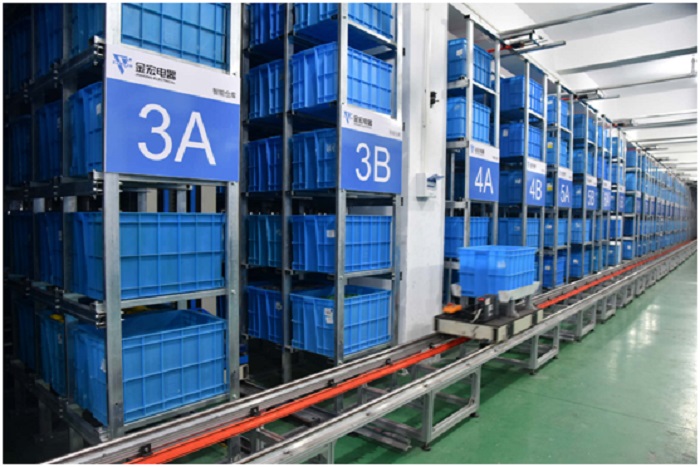



By Luo Aihua, People’s Daily
The accelerated construction of “Internet+” logistics is tremendously facilitating Chinese enterprises and people, opening up infinite possibilities for the future.
When a trucker surnamed Zhang was driving toward an unmanned warehouse at a logistics base of leading Chinese retailer Suning in Nanjing, East China’s Jiangsu Province, his vehicle was sensed by the warehouse 20 kilometers away with the assistance of the positioning system and electric fences, after which relevant programs of the warehouse were activated, starting to pick, pack and sort the cargos that Zhang needed.
Every cargo had a QR code, and after scanning, those needed by Zhang were automatically conveyed to the shipping area of the warehouse and then loaded to Zhang’s vehicle by an unmanned forklift. All Zhang had to do was to click on his phone to confirm his reception of the cargos.
“Warehousing is getting smarter, evolving from ‘people finding cargos’ to the other way around, and developing from radio-frequency technology to artificial intelligence,” said Chen Jian, general manager of Suning Technology’s logistics R&D department.
Smart warehousing today is more about algorithm optimization, such as the placing of cargos coming from different parts of the country, the selecting of the most efficient picking method, and maximizing the occupancy of packaging boxes of different sizes, Chen explained, adding that all these are realized through algorithm optimization.
Outside the warehouse, smart logistics is also developing fast.
Suning has launched unmanned delivery vehicles that are able to avoid barriers, drive automatically and be handled by human drivers when emergency happens. The vehicles have an average operational speed of 8 kilometers per hour, and can run at 15 kilometers per hour at most.
China’s service-focused e-commerce giant Meituan is also delivering orders to customers by autopilot vehicles. The vehicles can pick the commodities and then head for designated destinations.
When strict COVID-19 quarantine measures were imposed across China, smart robots equipped with the BeiDou Navigation Satellite System employed by China’s e-commerce platform JD.com were sending medical materials to the quarantine sections of hospitals in Wuhan, former epicenter.
In recent years, the logistics services witnessed continuous innovation, and unmanned delivery has become one of the biggest trends. All logistics enterprises are making efforts to advance the development of unmanned delivery.
Apart from that, self-service parcel pickup machines are also contributing to the customer end of the logistics business. According to statistics, 134,000 sets of such machines had been newly deployed in major Chinese cities last year, making the total number 406,000. It registered a growth of nearly 50 percent, and over 10 percent of the parcels were delivered to these machines.
Rural areas benefit from smart logistics, too. In Xintang village, Huazhou of South China’s Guangdong Province, express parcels are automatically rolling off a machine and delivered to villagers after recorded by staff workers, and the machine is also “taking in” fresh farm produce such as litchi, longan, guava and vegetables, to send them outside the village.
“Since ‘Kuaixian’ was launched, I can pick the fruits in the field immediately after receiving an order and hand them to ‘Kuaixian’, which largely saves the time and transport cost,” said Zheng Yueming, an orchardist in the village.
“Kuaixian” is a smart logistics line newly established by Xintang village which includes a base station, a low cableway, smart delivery robots, container boxes, a cloud management system, as well as reception and shipment devices.
The maximum loading capacity of each delivery is 100 kilograms, and the speed is 60 kilometers per hour. It only needs an electricity fee of three to five yuan ($0.4-0.7) to deliver 100 kilograms of cargos to places 100 kilometers away, and plus, the service runs 24 hours a day.
Thanks to the central warehouse in suburban areas, the logistics base station in township, and the reception and shipment station in the village, most cargos can be circulated between Xintang and the township at low cost within an hour.


The Executive and members of the.


The Acting Director, FCT Directorate of.


President Bola Ahmed Tinubu has been.



Barely a month after resignation of.


An Abuja based Legal Practitioner, Osuagwu.



Convener of Equitable Remedy, Mrs. Magaret.


Contractors handling the contract for city.


Nigerian government may have concluded plans.


The Diplomatic Correspondents Association of Nigeria.


A rights group, “Follow Me Talk.
Leave a Comment